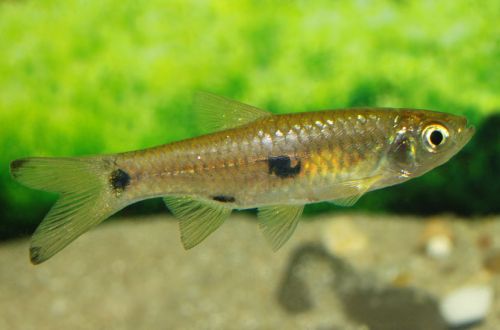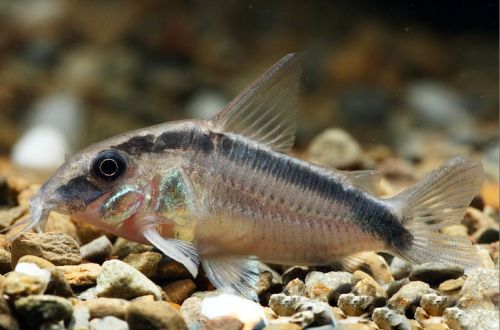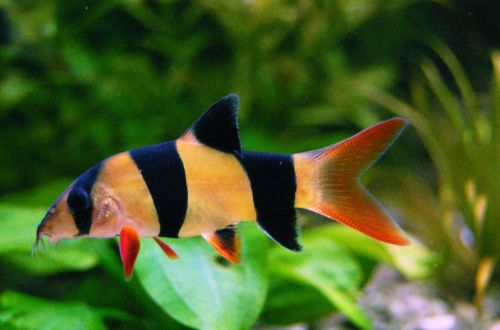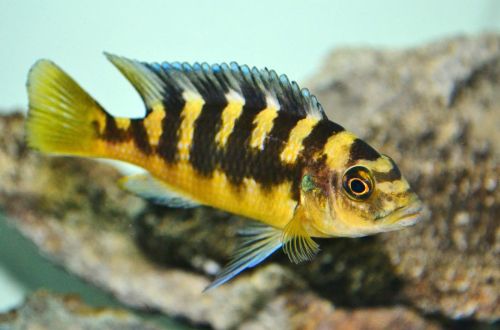
Elegant Rasbora
The elegant Rasbora, scientific name Rasbora elegans, belongs to the Cyprinidae family. An active, peaceful and hardy fish, it successfully adapts to various conditions, however, it is quite rare in amateur aquarism, which can be explained by its inexpressive color and the need to equip a large aquarium.

Contents
Habitat
They come from Southeast Asia, in particular from Peninsular Malaysia and the Greater Sunda Islands (Borneo and Sumatra). They occur in a variety of natural habitats, such as small fast-flowing rivers and vast ancient peat bogs in the rainforest canopy.
Brief information:
- The volume of the aquarium – from 250 liters.
- Temperature – 22-25°C
- Value pH — 5.0–7.5
- Water hardness – soft (2-12dGH)
- Substrate type – any
- Lighting – subdued / moderate
- Brackish water – no
- Water Movement – Low/Moderate
- The size of the fish is about 15 cm.
- Food – any food
- Temperament – peaceful, active
- Keeping in a flock of 6 individuals
Description
Adults reach a length of 15 cm, although it is worth noting that they rarely grow to this size in home aquaria. Females are somewhat larger than males, but inferior to them in color. The main color is gray with a slight greenish sheen of large scales, the belly is silvery. In the body pattern there are dark marks characteristic of this species, located in the center and at the base of the tail.
Food
With pleasure they will accept all types of dry, frozen and live food. A diet consisting mainly of meat products (bloodworm, insect larvae, large daphnia, etc.) provides the fish with all the necessary trace elements and allows them to show their best color.
Maintenance and care, arrangement of the aquarium
The choice of decor is not as important as the quality of the water and the amount of free space for swimming. The minimum tank size for a flock of Elegant Rasbora is 250 liters. You can decorate the aquarium in the form of a section of the river with a gravel substrate of variable size with several large boulders and snags. The picture is completed by the placement along the side walls of hardy plants such as Java fern, Bolbitis Gedeloti, Anubias, etc.
Another option is to simulate the conditions of peat bogs – an environment with dim lighting, a lot of roots, snags and foliage that has fallen to the bottom, and a bag of peat (purchased exclusively in pet stores or on specialized sites) placed at the bottom will color the water in a characteristic “tea” color and will help to establish slightly acidic pH values. A similar effect is achieved with a filter that uses peat-based filter media. From plants, the same Javanese fern is usually used, as well as Javanese moss, Cryptocoryne Wendt, Cryptocoryne balance and others.
The aquarium must have a lid to avoid accidental jumping of the fish. When choosing a river type of design, you can install an additional device to create an internal flow. The minimum required set of equipment, in addition to the filter, consists of a heater, lighting system and aerators.
The hydrochemical parameters of water are selected depending on the type of design, but in general they are universal and range from acidic to neutral pH values with low carbonate hardness. The only thing is that with the “swamp” type, the pH is below or equal to 6.0.
The quality of the water is of key importance, the fish are intolerant of the accumulation of organic waste, so weekly replacement of part of the water (15-20% of the volume) with fresh water and regular cleaning of the substrate are mandatory.
Behavior and Compatibility
The elegant Rasbora belongs to schooling species, is kept in a group of at least 6 individuals, is distinguished by a peaceful disposition, but high activity, which makes it an undesirable neighbor for sluggish fish, and, given its size, also for small ones. Among compatible popular species are representatives of cyprinids, catfish, cichlids, for example, Red-tailed barbs, Cross barbs, Five-line barbs, various large Rasboras.
Breeding / breeding
Refers to spawning species, females scatter eggs in the water column, and males at this moment fertilize it. Parental instincts are poorly developed, immediately after spawning, the fish can eat their own caviar and fry that have appeared.
Breeding is recommended to be carried out in a separate tank – a spawning aquarium, in order to protect offspring from adult fish. The design is simple, the main attention is paid to the ground, it should consist of particles of a sufficiently large size that do not fit tightly to each other, forming voids, for example, pebbles or decorative glass beads. When the eggs sink to the bottom, most of them fall into these voids and thus become inaccessible to fish. A similar effect is also achieved when using a fine mesh, which is fixed at the bottom.
Another way to ensure the preservation of eggs is to use low-growing small-leaved plants or mosses such as Riccia floating and Javanese moss, which are planted on most of the surface of the substrate (in this case, the soil can be any). Dense thickets of plants can provide reliable shelter for eggs no worse than special soil.
The size of the spawning aquarium is usually 100-120 liters. The equipment used is an aerator, a heater and a simple sponge filter of low power to prevent accidental suction of eggs and fry. Spawning occurs in dim light, so at first there is no need for a light source.
The impetus for the beginning of the mating season is the establishment of the water temperature in the region of the upper permissible marks at a slightly acidic pH value and daily feeding of protein foods (live or frozen). After some time, the females become noticeably rounder, and the males will begin to actively show signs of attention to their chosen ones. At this point, you should prepare a separate tank and fill it with water from the general aquarium, then transplant several females and the most colorful males there. Spawning can be initiated by adding cool water every few hours, thus lowering the temperature by 2-3 degrees. Females lay eggs in portions, so spawning is delayed for 4–5 days. The easiest way to determine its ending is by females – they will become slender.
The fish are returned. The fry will appear in 24-48 hours, and after another 3-4 days they will begin to swim freely. Feed with specialized micro food for juvenile aquarium fish.
Fish diseases
A balanced diet and suitable living conditions are the best guarantee against the occurrence of diseases in freshwater fish, so if the first symptoms of an illness appear (discoloration, behavior), the first thing to do is check the condition and quality of the water, if necessary, return all values to normal, and only then do treatment. Read more about symptoms and treatments in the Aquarium Fish Diseases section.





